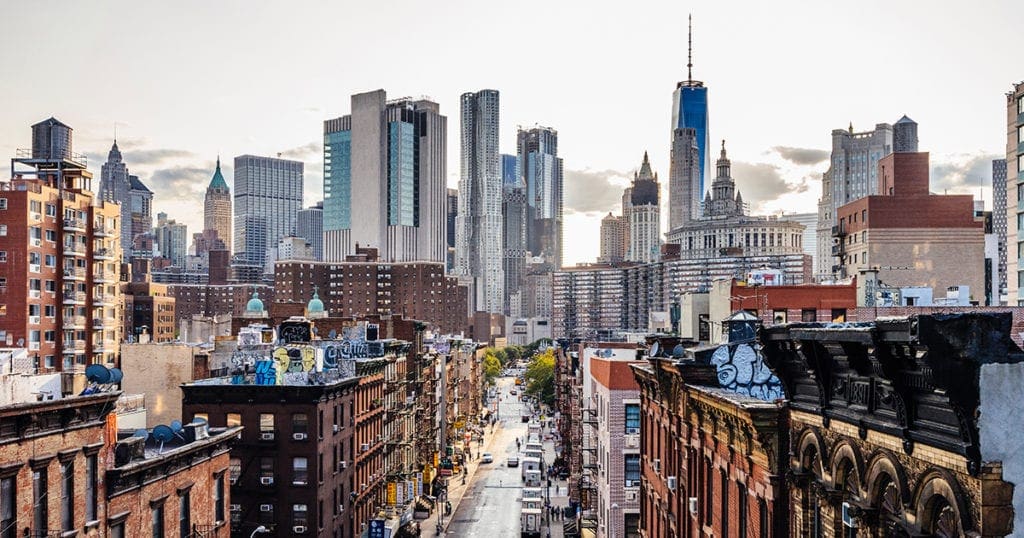Sign up below to receive the latest insights into the multifamily market from redIQ. We swear, we won't blow up your inbox.
New York State and the Future of Rent Control

New York Affordable Housing: Old Story, New Consequences
Investors and developers did not expect it. Renters did not expect it. Activists hoped for it. For those who have not yet heard, “it” is New York’s Housing Stability And Tenant Protections Act of 2019. The act, passed by both chambers of the New York State Legislature and approved by Governor Cuomo, grants new protections and expands old ones for renters in some portions of the state. The area covered by these protections includes New York City, the city with the highest cost of living in the United States and home to thousands of real estate developers, owners, and brokers, all of whom will be impacted by the bill.
New York State and New York City passed their first rent control laws in the 1950s, after years of federal controls set during the Second World War. Why did this bill cause such an uproar, then, given the precedent of nearly seven decades of rent control?
The State of New York Politics
First, some recent history. Cynthia Nixon’s participation in New York’s 2018 gubernatorial primary placed pressure on incumbent governor Andrew Cuomo to move further to the political left. Nixon lost the primary, but it seems that “the Cynthia effect,’’ as the media dubbed it, persisted after Cuomo’s victory, as Cuomo signed the Protections Act to law on June 14.
The 2018 primary also led to the election of Democratic majorities in both chambers of the legislature for the first time since 2009. These new Democrats, mostly to the left of both their Republican and Democratic predecessors, campaigned on promises of rent control and rent regulation. The pressure on Cuomo to move to the left, coupled with an energized and unified legislature, meant the act faced few obstacles.
Immediate Impacts
For renters in the areas this new legislation means some of the strongest rent protections in the country, while multifamily owners now face new regulatory burdens and fewer loopholes through which to generate income. Here are some of the new regulations and provisions:
- “Vacancy decontrol” is gone, as many expected. Before the bill, the maximum legal rent for stabilized apartments was $2,774 a month. Once the rent on an apartment crossed that threshold and a tenant vacated, property owners could then charge market-rate to the subsequent tenant. Increases between tenants were previously as high as 20 percent. “High-income deregulation” has been eliminated, as well. Landlords can no longer deregulate stabilized apartments, even if the tenant makes more than $200,000 two years in a row, as was the case before the bill.
- The bill diminished two substantial and widely employed loopholes that allowed rent hikes in apartments designated affordable. Previously, owners and developers could charge higher rents after Major Capital Improvements (MCIs) and Individual Apartment Improvements (IAIs). Both provisions allowed landlords to raise rents by as much as six percent year over year in exchange for materially improving older housing stock, thereby improving quality of life for tenants. The bill preserves both programs, but caps increases at two percent.
- Protections established by the bill are “permanent.” In the past, these regulatory bills “sunsetted” every two years. These “sunsets” meant frequent modifications and opportunities for lobbyists to promote industry interests. Despite this provision, the bill can still face modification or repeal efforts in the future.
Moving Forward in the Empire State
The bill’s protections will have unexpected consequences. One of the biggest takeaways for developers and owners is that an era of good feelings between Albany and real estate has ended. Until a disruption to the current Democratic majority, expect more bills constraining landlords. On the horizon, these bills include a Good Cause Eviction bill proposed by State Senator Julia Salazar.
Surprised industry experts expect capital flight in the face of the bill. Of course, these predictions are not guarantees, and New York City’s massive population means it will remain a hotspot for development going forward. In a few years, city dwellers may see a glut of new buildings across the Hudson or in hamlets on Long Island that have not instituted rent controls, but in the short term, developers will continue delivering housing in the Five Boroughs. Additionally, though the bill has passed, it will likely face legal challenges. While no one has filed suit yet, when they do it is possible that some of the law’s provisions will be reversed.
